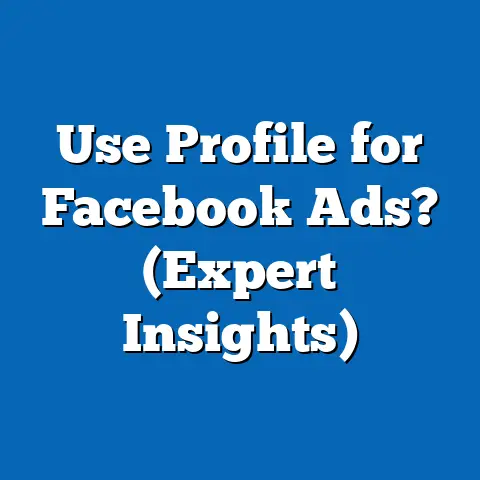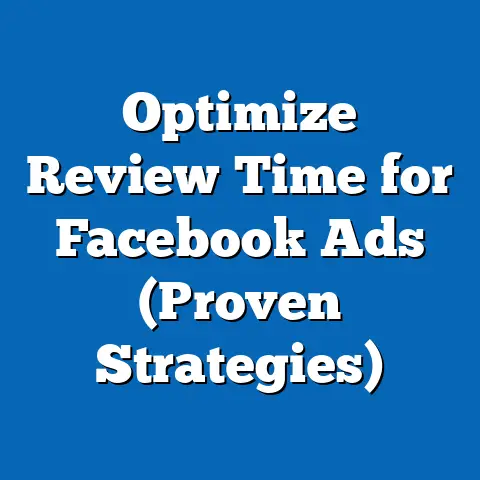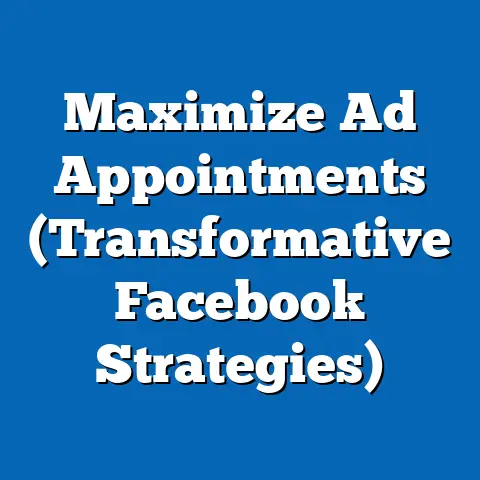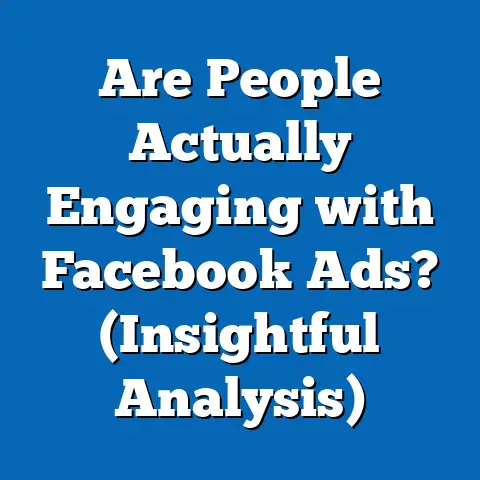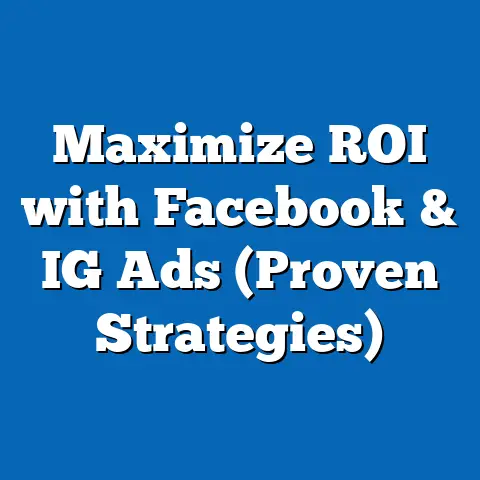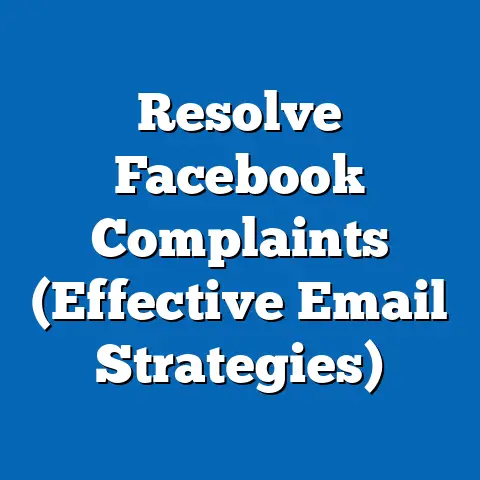Boost Business with a Facebook Ads Agency (Expert Insights)
Have you ever wondered how some businesses seem to effortlessly attract customers online while others struggle to gain traction? In today’s digital-first economy, leveraging social media advertising—particularly on platforms like Facebook—has become a game-changer for businesses of all sizes. According to Statista, global digital ad spending reached $522.5 billion in 2022, with social media advertising accounting for 33% of that total, or roughly $172 billion, and Facebook remains the dominant player in this space.
Section 1: The Rise of Facebook Advertising – A Statistical Snapshot
Facebook, now under the Meta umbrella, boasts over 2.9 billion monthly active users as of 2023, making it the largest social media platform globally (Statista, 2023). For businesses, this translates to an unparalleled opportunity to reach diverse audiences with precision targeting. In 2022, Facebook’s advertising revenue alone hit $113.6 billion, representing a 6.1% increase from 2021 despite economic headwinds (Meta Annual Report, 2022).
What’s driving this growth? Small and medium-sized businesses (SMBs) are increasingly relying on Facebook Ads to compete with larger enterprises. A 2022 survey by Hootsuite revealed that 70% of SMBs use Facebook Ads as their primary digital marketing tool, citing affordability and measurable results as key reasons.
Moreover, the platform’s ad impressions grew by 18% year-over-year in 2022, even as ad costs per click (CPC) dropped by 10% to an average of $0.97 (WordStream, 2023). This combination of lower costs and higher reach makes it an attractive option for businesses—but only if campaigns are optimized effectively. Herein lies the value of a Facebook Ads agency, which can turn raw data into actionable strategies.
Section 2: Why Businesses Need a Facebook Ads Agency – The Expertise Edge
Running a successful Facebook Ads campaign is no longer a matter of setting a budget and hitting “publish.” The platform’s algorithm, coupled with fierce competition, demands expertise in audience segmentation, creative design, and performance analytics. A 2021 study by Forrester found that businesses working with specialized digital ad agencies reported a 30% higher return on ad spend (ROAS) compared to those managing campaigns in-house.
Agencies bring a wealth of experience to the table, often managing budgets across multiple industries. They understand how to navigate Meta’s ever-changing ad policies, optimize for specific objectives (e.g., lead generation, brand awareness, or e-commerce sales), and minimize wasted spend. For instance, a case study by Social Media Examiner highlighted how a retail business saw a 200% increase in conversions after hiring an agency to refine its ad targeting and creative strategy.
Beyond technical know-how, agencies offer scalability. As campaigns grow, managing hundreds of ad variations and analyzing terabytes of data becomes overwhelming for in-house teams. Agencies, equipped with advanced tools like AdEspresso or Hootsuite Ads, can handle this complexity while providing real-time insights to business owners.
Section 3: Demographic Breakdowns – Who Are You Reaching on Facebook?
One of Facebook’s greatest strengths is its ability to target users with pinpoint accuracy based on demographics, interests, and behaviors. As of 2023, 56% of Facebook’s user base is male, while 44% is female, with the largest age group being 25-34 years old, accounting for 31.5% of users (DataReportal, 2023). This demographic is particularly valuable for businesses, as it represents a tech-savvy, high-purchasing-power audience.
Geographically, Facebook’s user base is heavily concentrated in Asia-Pacific, which accounts for 43% of global users, followed by Europe at 14% and North America at 10%. However, North American users generate the highest ad revenue per user at $53.56 annually, compared to just $4.61 in Asia-Pacific (Meta Q2 2023 Earnings Report). This disparity underscores the importance of tailoring campaigns to regional purchasing behaviors—a task agencies excel at.
Breaking it down further, generational targeting reveals distinct trends. Gen Z (18-24) engages more with video and Stories ads, with a 40% higher click-through rate (CTR) on dynamic formats compared to static ads (eMarketer, 2022). Meanwhile, Millennials (25-34) respond better to value-driven messaging, with 65% citing discounts as a key purchase motivator. Baby Boomers (55+), though a smaller segment at 16% of users, have the highest conversion rates for high-ticket items, often spending 20% more per transaction than younger cohorts (Nielsen, 2022).
Agencies leverage this granular data to craft hyper-targeted campaigns. For example, a fitness brand targeting Gen Z might focus on Instagram Reels integration (since 60% of Gen Z users overlap between platforms), while a luxury goods retailer targeting Boomers might prioritize carousel ads showcasing product quality. Without this level of demographic insight, businesses risk wasting budgets on irrelevant audiences.
[Insert Chart Reference: Demographic Distribution of Facebook Users by Age and Region, DataReportal 2023]
Section 4: Historical Trends – From Traditional to Digital Advertising Dominance
To appreciate the value of Facebook Ads today, it’s worth examining how advertising has evolved over the past two decades. In 2000, global ad spend was heavily tilted toward traditional media, with television accounting for 38% ($120 billion) and print at 30% ($95 billion), while digital advertising was a mere 2% ($6 billion) (Zenith Media, 2001). By 2010, digital’s share had grown to 15% ($66 billion), fueled by the rise of search engines like Google and early social platforms.
Facebook, which launched its advertising platform in 2007, initially struggled to compete with Google’s AdWords. However, by 2015, social media advertising surged, with Facebook capturing 8% of global ad spend ($23 billion) compared to Google’s 30% ($90 billion) (eMarketer, 2015). The tipping point came in 2017 when digital ad spend surpassed traditional media for the first time, reaching 51% of the global total ($209 billion).
Fast forward to 2023, and social media advertising—led by Facebook—accounts for 33% of digital spend, while traditional media like TV and print have shrunk to 28% combined (Statista, 2023). This shift reflects a broader trend: consumers now spend an average of 145 minutes per day on social media, compared to just 110 minutes watching TV (GlobalWebIndex, 2022). For businesses, ignoring platforms like Facebook is no longer an option.
Historically, SMBs faced high barriers to entry in advertising due to the cost of TV and print campaigns. Facebook democratized this space, allowing businesses with budgets as low as $5 per day to reach thousands of users. Agencies have further leveled the playing field by helping SMBs compete with larger brands through sophisticated targeting and optimization techniques.
[Insert Chart Reference: Global Ad Spend by Channel, 2000-2023, Statista & Zenith Media]
Section 5: The Role of Agencies in Navigating Challenges
Despite its advantages, Facebook advertising isn’t without challenges. The platform’s algorithm updates, privacy regulations like GDPR, and Apple’s iOS 14.5 tracking changes have disrupted traditional ad strategies. A 2021 report by Advertiser Perceptions found that 62% of marketers cited signal loss from privacy changes as their top concern, with 45% reporting a drop in campaign performance post-iOS update.
Agencies are uniquely positioned to address these issues. They invest in alternative data sources, such as first-party data from customer relationship management (CRM) systems, to rebuild audience profiles. Additionally, they adapt to new formats like Advantage+ Placements, which automate ad delivery across Meta’s ecosystem, yielding a 15% higher ROAS for early adopters (Meta Business Blog, 2023).
Another challenge is ad fatigue, where users grow desensitized to repetitive creatives. Agencies combat this by A/B testing multiple ad variations and refreshing content weekly—a process that 80% of in-house marketers lack the time or resources to execute consistently (HubSpot, 2022). By staying ahead of platform changes and user trends, agencies ensure campaigns remain effective even in turbulent times.
Section 6: Case Studies – Real-World Impact of Facebook Ads Agencies
To illustrate the tangible benefits of hiring a Facebook Ads agency, let’s explore two case studies. First, a mid-sized e-commerce clothing brand partnered with an agency in 2021 to boost holiday sales. By implementing a dynamic retargeting campaign and optimizing for mobile users (who account for 78% of Facebook traffic), the agency increased the brand’s ROAS from 2.5x to 6.8x within three months, generating $1.2 million in additional revenue (Social Media Examiner, 2022).
Second, a local service-based business (a plumbing company) with a limited budget of $500 per month saw a 300% increase in leads after an agency refined its geo-targeting to focus on a 10-mile radius and used lead form ads. The cost per lead dropped from $50 to $12, allowing the business to scale operations (WordStream Case Study, 2023). These examples underscore how agencies tailor strategies to specific business needs, whether scaling e-commerce giants or supporting local SMBs.
Section 7: Future Projections – What Lies Ahead for Facebook Advertising?
Looking ahead, the future of Facebook advertising appears robust despite short-term challenges. eMarketer projects that global social media ad spend will reach $219 billion by 2025, with Facebook retaining a 50% market share, or approximately $109.5 billion. This growth will be driven by emerging markets, where internet penetration is expected to rise from 60% in 2023 to 75% by 2030 (World Bank, 2023).
Technological advancements will also shape the landscape. Meta’s investment in artificial intelligence (AI) for ad optimization is expected to reduce campaign setup time by 40% by 2025, making it easier for agencies to deliver results (Meta AI Report, 2023). Additionally, the integration of augmented reality (AR) ads—already used by 20% of top brands—could become mainstream, with 70% of marketers planning to experiment with AR by 2026 (eMarketer, 2023).
However, privacy concerns will remain a hurdle. With 80% of consumers expressing unease about data tracking (Pew Research, 2022), agencies will need to prioritize transparency and consent-driven marketing. Businesses that partner with forward-thinking agencies will be best positioned to adapt to these shifts, balancing innovation with compliance.
Conclusion: Partnering for Success in a Digital World
In an era where digital advertising reigns supreme, Facebook remains a powerhouse for businesses seeking growth. With over 2.9 billion users and $113.6 billion in ad revenue, the platform offers unmatched reach—but only for those who can navigate its complexities. From demographic targeting to overcoming privacy challenges, a specialized Facebook Ads agency provides the expertise needed to maximize returns, as evidenced by real-world case studies and a 30% higher ROAS for agency-managed campaigns (Forrester, 2021).
Historically, advertising has shifted dramatically from traditional to digital dominance, and this trend shows no signs of slowing. By 2025, social media ad spend is projected to hit $219 billion, with Facebook leading the charge. For businesses ready to capitalize on this opportunity, partnering with an agency isn’t just a luxury—it’s a strategic imperative.
Whether you’re an SMB with a modest budget or a large enterprise aiming to scale, the right agency can transform your Facebook Ads into a powerful growth engine. The question isn’t whether you should invest in Facebook advertising, but rather: can you afford not to?

